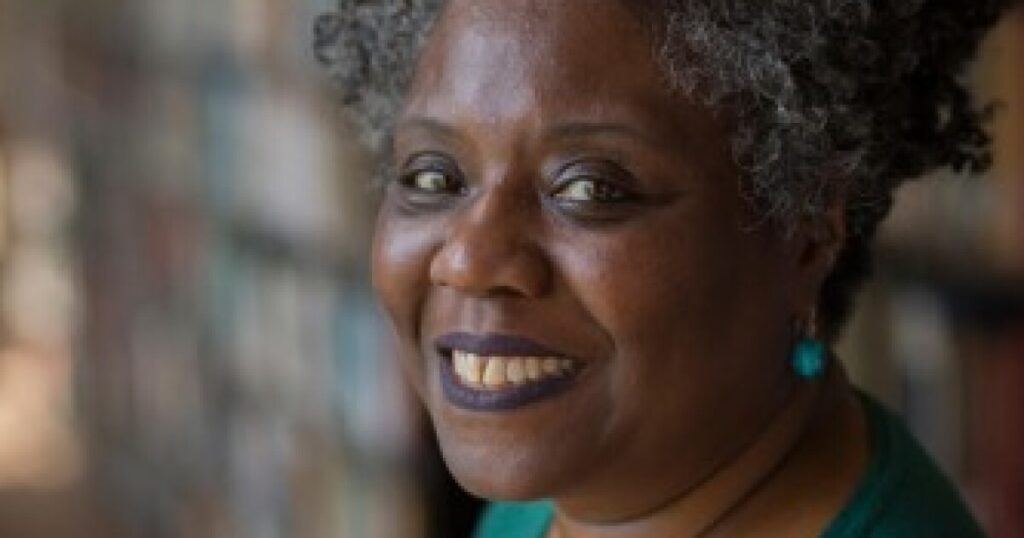In the latest release, a compelling book combines statistical insights with personal narratives to explore the consequences of school desegregation across four generations. Noliwe Rooks, the author of “Integrated: How American Schools Failed Black Students,” provides a detailed examination with a focus on Detroit’s experience. Sarah Cwiek, Michigan Public education reporter, engaged in an insightful discussion with Rooks.
SC: Noliwe Rooks, a professor and chair of Africana Studies at Brown University, it’s great to have you here.
Could you start by reading a passage from the introduction? Specifically, the paragraph beginning with, “I heard that part just fine.” But first, could you give us some context for this story?
NR: To open the book, I share an attorney friend’s story about a lawsuit concerning New York City school children’s experiences. She recounted an incident at a Bronx elementary school, where a diverse group of students were set to visit a private school. The Bronx is among the poorest districts, predominantly home to children from Puerto Rican, Black, Latinx, and Dominican backgrounds. Here’s the story:
“I heard that part just fine. It took me a minute to fully grasp the rest. One day, the little girl came home and with squealed excitement shared the news that her class was going on a field trip to a rich school. They would, she said, ride yellow buses, meet other children, and see different teachers. She assured her mother she would be on her best behavior. A few days after the trip, a teacher found the little girl at her desk, scraping away at her arm with a paper clip. She was trying to erase the chocolate-hued top layer of her skin and free the white skin hiding underneath. She had decided that skin, her skin, was the reason she didn’t go to a pretty school like the one she and her classmates had visited on that field trip, and it made her feel sad.”
SC: That story is both disturbing and impactful. What prompted you to begin with it?
NR: It was the image of a child believing that beneath her skin lay a different color, one that would allow her access to better educational opportunities, that struck me. This anecdote sets the tone for the book, urging readers to contemplate the children at the heart of these narratives and our responses to educational inequality.
SC: Your book weaves in narratives and personal histories effectively. Can you summarize the book’s essence and why it’s pivotal now?
NR: The book primarily examines the aftermath of Brown v. Board of Education, the 1954 landmark ruling that outlawed racial discrimination in schools. Initially celebrated, resistance followed as the implications on neighborhood schools became apparent. White families often opposed moving children to different areas, and Black families faced long commutes for better education. The narrative shifted towards white rights and self-determination. My grandparents taught in segregated schools, where Black students had rich educational experiences, contrary to many current representations. Highlighting these stories is crucial for proposing effective solutions.
SC: Detroit figures prominently in your book. Can you elaborate?
NR: Northern states like Michigan faced unique challenges in school integration, as no explicit segregation laws existed. White flight, as families relocated beyond traditional boundaries, hampered integration efforts. As Detroit’s public schools transitioned to majority-Black, tax dollars left with white families, creating separate, self-funded districts.
SC: You also explore the state’s intervention in Detroit schools from 1999 to 2016. Why was this significant?
NR: During this period, Detroit Public Schools became a focal point for education reform, driven by privatization and cost-cutting. This approach bypassed democratic processes, granting emergency managers extensive control over finances. However, this control led to decisions that undermined community-driven efforts to improve schools, leaving them segregated and underperforming.
SC: Your family’s history is integral to the book. Was that intentional from the start?
NR: Initially, I envisioned a family memoir. My family’s story humanizes the broader narrative, providing tangible examples of historical events. It’s essential to balance personal stories with the larger context to propose solutions. I hope readers recognize the ongoing value of educating all children, as demonstrated in past endeavors, and reject the notion that skin color should dictate educational opportunity.
Noliwe Rooks is the author of “Integrated: How American Schools Failed Black Children.” She spoke with Michigan Public education reporter Sarah Cwiek.





